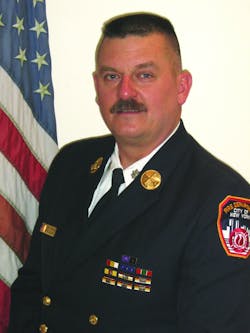My fire service career began in 1976, the same year that Firehouse Magazine hit the streets, meaning we are both celebrating our 40th anniversary this year. When I look back at the four decades that have passed, I am amazed, thrilled, shocked, disappointed and, mostly, thankful. Let’s take a look at some of the people, issues, tools, policies, successes and failures that are part of the past 40 years in the American fire service.
An evolving industry
When I first joined the fire service, many of the apparatus were still open cab rigs. That meant that everyone, including the officer and driver, could look up and see the sky. Yes, they had flimsy convertible tops that could be put up, but they were mostly cold in winter, wet in spring and hot in summer. Today, most apparatus are climate-controlled with custom-padded seats, tinted windows and noise-reduction features.
Although heavy manual forcible-entry tools were around 40 years ago—and are still with us today—there are a number of dramatically effective and very helpful tools that can be found on today’s fire apparatus. The hydraulic forcible-entry tool made a difficult and dangerous task much easier to complete and faster than ever before. The thermal imaging camera is still being developed and improved, and adds a dimension to the fireground that was unthinkable 40 years ago. SCBA, which was on the first truck that I responded on, was often left on the apparatus or in the big black box it was stored in. I remember being told one night tour in Rescue 3 that I was to leave the SCBA on the rig and get that saw to the roof (bad advice). Now every firefighter has a modern, scientifically engineered SCBA that they wear on every run. Portable radios are another piece of equipment that have gone from being present in small numbers to being present at every riding position, enhancing both operations and firefighter safety and survival.
So what else has changed? It seems like we’ve had it for a long time, but bunker gear or full-body PPE is a new arrival on the fireground for many departments. I remember wearing the long black coat, pull-up rubber boots and a custom-fit leather helmet for my first 10 years in the fire service. That was cool and light and fast. Yes, it was. But after wearing bunker pants along with a turnout coat, hood, helmet, gloves and SCBA, I felt like I was naked with just the coat and boots. That was not an easy transition, but it happened and I believe we are all thankful for that.
I’ll bet if you were fighting fires 40 years ago, your department had few, if any, firefighting procedures—I mean written, established, department-wide guidelines on how to do the job. Regardless of whether you call them SOPs or SOGs, you have to have something written down. You must commit to a direction that your troops can follow. Having companies on each shift or on each run doing things differently based on who is riding the front seat is insanity. Today many fire departments have developed, or borrowed and modified, other departments’ guidelines. This gives the officers and firefighters a plan to study and a guide by which they can be measured. It makes every fire company professional.
Accountability is a vital element of every fire department operation, and 40 years ago, it was almost nonexistent. Sure the company officer looked back to see who was on the rig, but few had riding lists or any manual system of accounting for the firefighters. Today, there is a wide variety of accountability systems and tools for use, not only by company officers but also by incident commanders. Paper riding lists, plastic tags, passport systems, electronic devices and radio tracers are all now part of the available accountability systems.
Amazing friends
When I think of the people that I have worked with and met in my fire service and Firehouse career, I am simply amazed. When I joined my first fire department, I was an 18-year-old who simply wanted to be a fireman (yes, that’s what we called it then). In the 40 years since that time, I have met, worked with and become friends with the likes of Vinny Dunn, Harvey Eisner, Mike Lombardo, Butch Cobb, Mickey Conboy, Harry Carter, Ron Moore, Mike Wilbur, Jeff Barrington, Billy Goldfeder, Mike Smith, John Norman and many more. What a ride it has been!
About the Author
John J. Salka Jr.
Battalion Chief
JOHN J. SALKA JR., who is a Firehouse contributing editor, retired as a battalion chief with FDNY, serving as commander of the 18th battalion in the Bronx. Salka has instructed at several FDNY training programs, including the department’s Probationary Firefighters School, Captains Management Program and Battalion Chiefs Command Course. He conducts training programs at national and local conferences and has been recognized for his firefighter survival course, “Get Out Alive.” Salka co-authored the FDNY Engine Company Operations manual and wrote the book "First In, Last Out–Leadership Lessons From the New York Fire Department." He also operates Fire Command Training, which is a New York-based fire service training and consulting firm.

